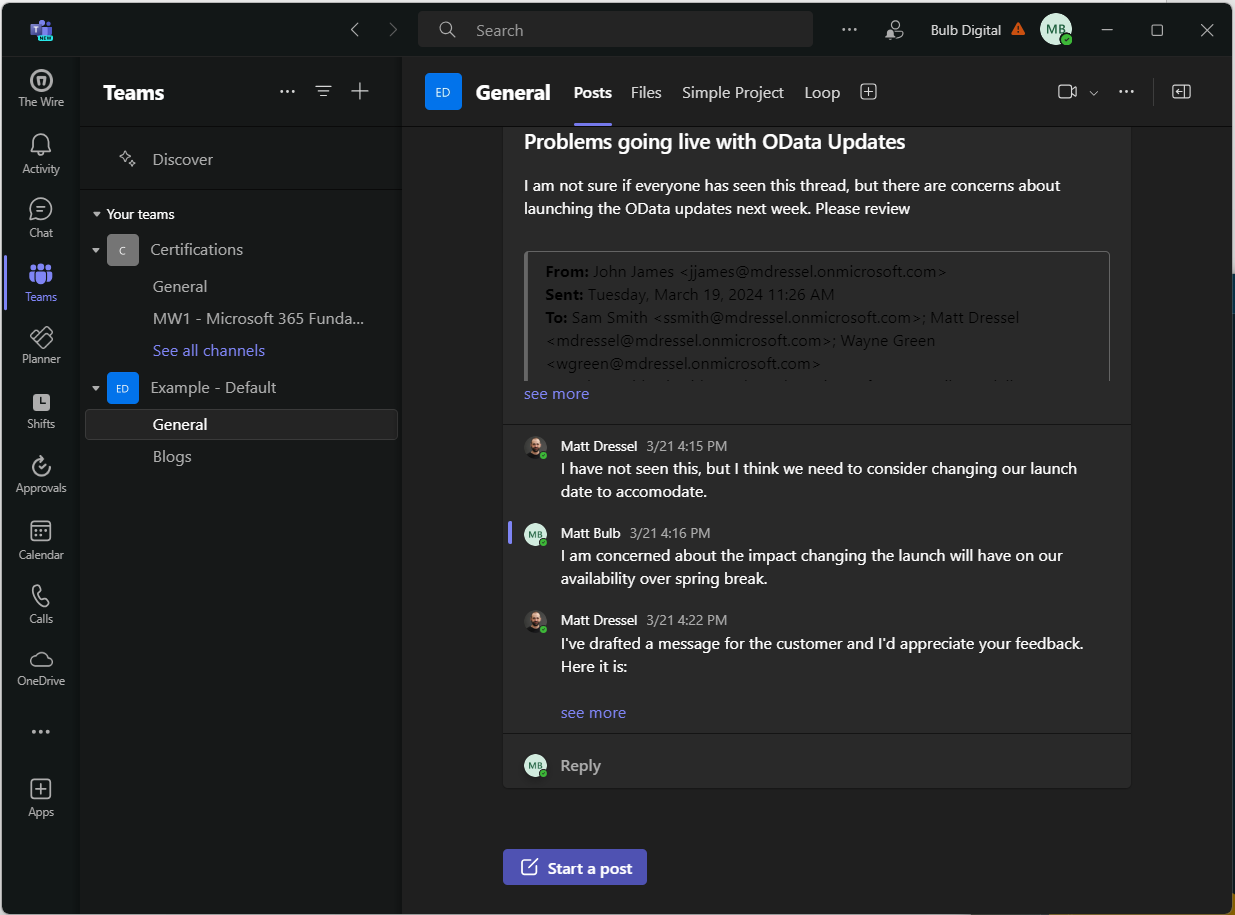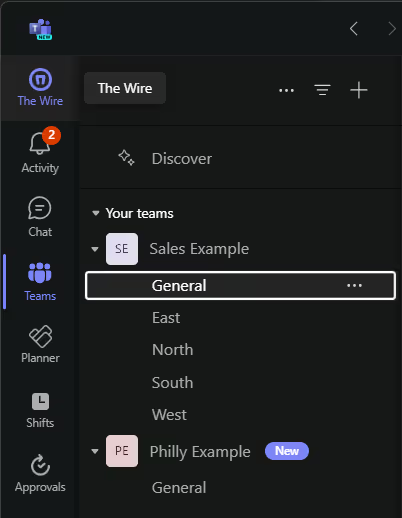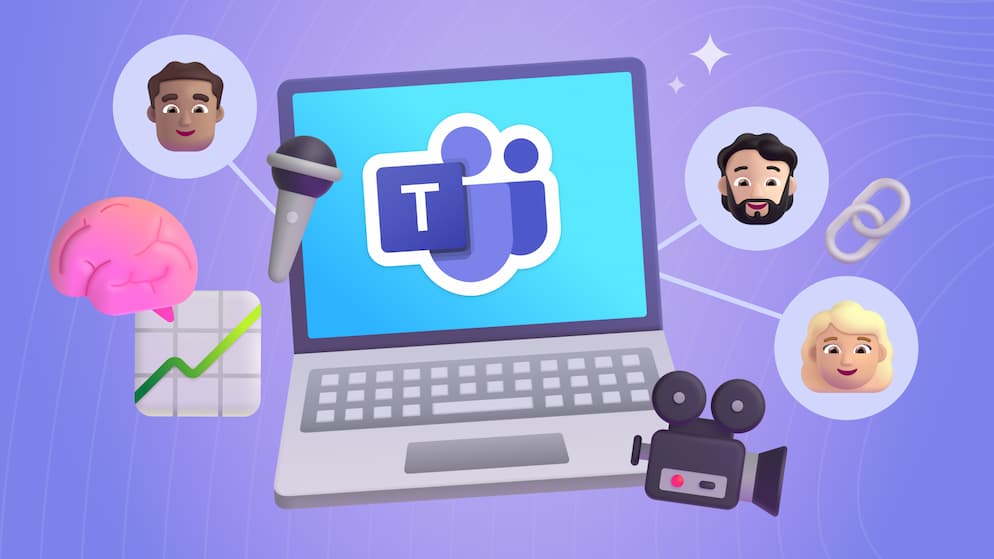You Might Be Using Microsoft Teams Wrong
Teams is great for collaboration, if you know how to use it correctly 😉 In today's blog, we're going to break down the tool and show you how to use it for seamless collaboration.
Intro
If your organization uses Microsoft Teams for collaboration, you might have issues organizing projects, managing permissions, and reducing clutter. The good news is that with a little bit of knowledge about how Microsoft Teams works and some general guidelines you can start to take control of these problems.
Before We Get Started: Topic vs Person-Centric
There’s an important concept you should make sure you understand, and that’s the difference between topic and person-centric tools. We’ll be talking about this concept a few times through the blog. If it’s new to you, we wrote another blog all about it. Go check that out first, then come back here.
You can use Teams for either topic or person-centric approaches, so it’s important to understand before we go further.
Some Basics of Teams
So many people we talk to know Teams as “the tool we use for meetings”, or maybe even one they use to chat with coworkers. This makes sense since these features are unique to Microsoft Teams in the Microsoft 365 space. However, it can do SO much more.
Much of the power you get from using Microsoft Teams is from its ability to reuse, augment, and streamline all the other Microsoft 365 tools. The problem is Microsoft wraps all these other tools in Teams so well often people don’t even know they are using OneDrive, SharePoint, Planner, To Do, Outlook Calendar and more.
This is important when you’re trying to use Teams in the best way, because you need to understand what of these underlying tools support person-centric vs topic-centric communication and collaboration.
The Person-Centric Pieces of Teams
Some of the most used features of Microsoft Teams are all person centric, like chats, files, calls, calendar, and more.
The easiest way to tell this is when you go to create a chat or start a call, the first thing you need to do is choose the people you want to chat or call.
The same goes for the Files app on the left side – it's just a view of your OneDrive (and in the very near future they’ll be renaming it OneDrive).
You can apply this thought process to almost all other applications you might use within Microsoft Teams. They’re all Person-centric. The primary exception is Teams.

The Topic-Centric Pieces of Teams
There’s only one piece. And that is a “Team”.
Microsoft’s naming of the Teams app/feature within the application that’s also named Teams is... problematic, to say the least.
We often use the term “Team Shared Workspace” to describe a Team within Microsoft Teams (the application) to make these easier to distinguish. It helps with the naming, but we also think it describes the intention of the feature better: It’s a workspace used to collaborate and communicate about a specific topic, and that workspace is shared with other users.
But this means when you first sign into Microsoft Teams you may not have anything show up because you aren’t a member of any Teams Shared Workspaces yet. As you create or get added to new Teams Shared Workspaces, you’ll see this space within Teams start populating with topic-specific workspaces. This is where you’ll be able to do very similar things to the chats, files, calls, calendar, etc. we talked about before. The difference here is now they’re in a Teams Shared Workspace, which allows them to be topic-centric instead of person-centric.

Started
Enough about the tool, how do we use it?
We aren’t going to focus on how to use teams in a person-centric way. This is by far the most common way people are already using Teams. Where 90% of people we work with struggle is using Teams in a topic-centric way effectively. So that is where we are going to focus.
First, you need a Team Shared Workspace (topic-based collaboration, here we come).
Creating a Team Shared Workspace
To see if you can create a new Team Shared Workspace you can click the plus sign and select Create Team. If you don’t get a message saying you aren’t allowed to create a new team, then you’re set. If you’re blocked from creating a new Team Shared Workspace, you’ll need to work with your admin to create one.
This is common and is most likely because users often don’t understand the ramifications of creating a new Team Shared Workspace (there’s a lot of stuff behind the scenes it creates that IT likes to keep tabs on). If we could get everyone in the world to read this blog, maybe more IT departments would unlock this 😊
When you create a new Team Shared Workspace you’re creating a “topic” you can work with other people on. The main feature you get right out of the gate when you create a Teams Shared Workspace are channels. You can think of channels as a sub-topic below the main Team Shared Workspace topic.
Transitioning from Chat to Channels
Now that you have a Team Shared Workspace with channels, you need to start using it!
I can understand why most people think of using the Teams to chat and don’t naturally think of channels.
- It is the default first app (above Teams).
- It is natural to think about who you need to talk to first
- Almost every other piece of technology requires the destination as the primary focus (email, text messages, phone calls, even snail mail).
Just because it isn’t natural, doesn’t mean it is wrong or needs to be difficult. Most often it is simply a matter of examining the purpose behind the communication and collaboration you are doing. I think you will find that in 90+% of the scenarios the person you are talking to isn’t as important as the role the person has within your organization or team and the topic you are talking about. This means Channels are a far superior way to do this communication.
If you think transitioning is impossible, let me tell you a bit about how I communicate. I use the Chat application for less than 5% of my monthly messages and in some months, it is less than 1%. Across our organization we use chats less than 30% of the time. The rest of the messages happen in Channels.
Now that I have convinced you that you should never ever use the chat app again 😊, there are a few common hang-ups you might run into. Let’s review and give you some options of how to think about them.
- You can’t create Team Shared Workspaces and there isn’t an existing Team Shared Workspace you feel is appropriate: The good news is that you shouldn’t need to create a new Team Shared Workspace all the time. So once you work through your organizations process you likely will be set for a while. Also, don’t let perfect be the enemy of “good enough”. Start in Chat or in a less idea Team Shared Workspace while you get a new one created.
- You feel uncomfortable having discussions out in the open: In many cases this is a habit or culture issue where this approach is just different. In other cases it comes from bad experiences where other people aren’t able to handle this open style of communications. Don’t be afraid of the discomfort, you and your organization will be better when you are able to do this more.
- Stuff gets missed because people don’t get notified: This is a challenge. We recommend making sure everyone understands how to manage notifications and coming up with etiquette that works for you. As an example, you can only expect someone to actually read your message if they are tagged in the message.
Moving away from chat and into channel often comes with some hang-ups for people. None of them are wrong, but let’s talk about them quick.
- No Permissions: They don’t have permissions to create a new Team Shared Workspace and there isn’t an existing Team Shared Workspace they think is a good fit for this message
- Privacy: It can feel uncomfortable having discussions out in the open! In some cases, this is just a habit. But other times it comes from having a bad experience where other people aren’t able to handle this open style of communication.
- They don’t always get notified as they would expect and they always get notified in a chat.
While all of these are real problems, you should not let these prevent you from using Microsoft Teams in the most effective and efficient way. Work with your administrator and your direct collaborators to change this behavior. To help, let’s go through a few ways you can organize teams to make this easier.
Ok hopefully you’re following us on this journey here. We understand the core change that needs to happen, but starting with a blank list of Team Shared Workspaces or Channels can cause a lot of folks to get “scared” or prevent them from moving forward. Which leads us to one of our other most common questions:

SELF ASSESSMENT
Is your business getting full value from your M365 subscription?
Billions of dollars are wasted each year on underused subscriptions. Take 3 minutes to find out where your tools are driving results, and where they’re holding you back.
Find Out Now

Is Team Communication Holding You Back?
Find Out in Just 2 Minutes.
Take our quick scorecard to uncover communication gaps and hidden barriers within your team.
When Should I Create a New Team?
Make Teams based on people who work together
This is one of the first ways people often organize Team Shared Workspaces, but they usually either go way too broad (a team for an entire division) or they go too focused and create a team for two people. While there isn’t anything inherently wrong with these approaches they can create the following problems.
If the team is too broad
- People feel uncomfortable having honest frank discussions
- Frequent discussions outside of threads can be distracting
- If there is a lot of content it could be hard to find what you’re looking for
- The larger the Team Shared Workspace is the more you need to manage the structure to make it effective
If the team is too specific
- People will find it hard to be effective because they don’t have everything or everyone they need
- It can promote duplication of information in multiple Team Shared Workspaces that are similar
- You can end up with duplicate Team Shared Workspaces because users don’t see an existing team in their list
Our recommendation is to create the biggest teams you can without creating the problems above. Also, consider creating broad and specific Team Shared Workspaces and let users decide where their content is most appropriate.
As an example, let’s look at an organization with a sales department with 20 team members split into 4 regions. In this case we would recommend creating a single Sales Team Shared Workspace with a channel for each of the 4 regions. These same users might also be part of a larger Team Shared Workspace dedicated to each of the “home offices” they are part of. Both of which are Team Shared Workspaces related to who people work with.

Make Teams based on projects that will live 2+ weeks
We recommend creating a dedicated Team Shared Workspace for projects that last more than 4 weeks. This will enable you to group all of the content related to that project into one place and easily give access to different people who need to use this content.
We think projects that live less than 2 weeks likely aren’t big enough to warrant a dedicated Team Shared Workspace. We find it would be easier to simply roll these projects into a Teams Shared Workspace based on the type of project being completed. Perhaps there are folders for each specific project.
Teams based on function/skillset/initiative
You should also create Team Shared Workspaces as a space for people who may work in different parts of the organization on different projects but have a shared topic or interest. Some examples of this might be:
- A team focused on Managers where they can discuss specific challenges and share resources.
- A team for an enterprise-wide technology migration. Perhaps there are specific channels for each part of the organization that is going through the migration.
- A team for software developers throughout the organization to work on standards and best practices.
Create channels instead of new Teams
Teams Shared Workspaces aren’t the only option to create topic based spaces to collaborate. You can also create a channel within an existing team. This can help further organize information within a Team Shared Workspace. Before you go creating a new Team Shared Workspace, we would recommend consider if you can make a new channel work instead.
One of the biggest reasons people wouldn’t do this is that when you add a new channel to a Team Shared Workspace, it inherits the permissions from the Team Shared Workspace. In many cases they really want that new channel to just be accessible to a subset of the users within the larger Team Shared Workspace.
Working With External Users
If you’re working with users who aren’t part of your organization, you have options to include them in your Team Shared Workspace. The primary options are:
- Add them directly to your Team Shared Workspace if you want them to have a full Teams Shared Workspace experience.
- Share folders and files with external users if you want to just allow external users to access some of the content.
- Using a Shared channel with a partner organization. The users experience here will be similar to #1, but it will even be more integrated into their Teams experience.
Choosing between these options can be a challenge as you aren’t in control of the external users systems. Below are some things you should consider when choosing.
Adding guest users to your Team Shared Workspace
This is very easy to do as an owner. You simply add a member the same way you do other users. However, the invited user must follow some specific steps to make this work. For example:
- They must accept the invite within 24 hours
- They must sign in with a Microsoft account
- They must adhere to your organizations MFA/security policies
- Your Team Shared Workspace content will not show up in their Teams next to their regular organization content. They have to switch organizations to, so it is not super easy to see updates.
Sharing folders/files within your Team Shared Workspace
Doing this creates customized permissions which has implications for the owner of the team (see the next section). However, for the user who you’re sharing with it is pretty simple. They get a link to the file/folder and they can simply access it directly.
What to do if you want to customize permissions within a Team
There are a lot of things you can do to customize the permissions within a Team Shared Workspace. In general we recommend avoiding custom permission. In fact we recommend only allowing owners to share content within a Team Shared Workspace. The bottom line is that it is entirely too easy to make a mistake in with permissions in SharePoint and Teams related to permissions.
Conclusion
Hopefully this has given you a picture of how to think about Teams Shared Workspaces and have some clear ideas about how to organize things in a better way.

.avif)







.avif)





